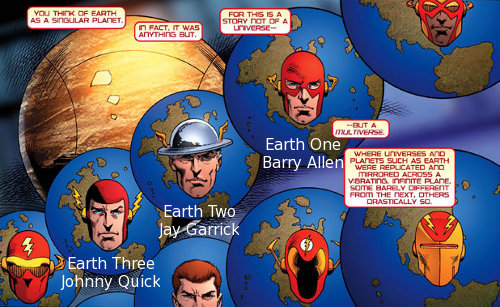How important is it to label fictional universes? Does it matter that Young Justice takes place on “Earth-16,” while the universe of Batman: The Brave and the Bold doesn’t have a number? Is Earth One a good label for a self-contained Superman or Batman series? If an editor writes “Earth-1” instead of “New Earth” in Tangent: Superman’s Reign, should it overshadow discussion of the actual story? Do they need to be precisely separated, with each story identified clearly as belonging to one universe or another, or is a more general classification enough?
And once you’ve decided to catalog them, how do you label them?
A few multiverses that come to mind are DC Comics’, Marvel Comics’, and Michael Moorcock’s.
The multiverse of Moorcock’s Eternal Champion cycle is extremely fluid, with details changing whenever he wants to tell a different story. Just looking at the Elric stories, there are three or four origins for Stormbringer, and as many for the Melnibonéans and their pact with Arioch. There are several versions of the 20th-century Count Ulrich Von Bek (depending on whether you include Count Zodiac). Worlds are less like parallel lines and more like streams that can run together, mingle, and separate again (kind of like the briefly-used Hypertime as used by DC).
DC and Marvel, on the other hand, favor a discrete structure in which each universe can be precisely identified. This may have something to do with the focus on continuity as a key element of comic-book storytelling, and would explain why, for instance, Marvel has made an effort to number what seems to be every single alternate reality they’ve ever published.
Approaches to numbering:
- Sequential. DC started out like this, with Earth-1, Earth-2, Earth-3, etc.
- Random. Current DC multiverse, except for the first few we saw at the end of 52 which were based on worlds from the original DC multiverse (Earth-2, Earth-3, Earth-5 from Earth-S, Earth-10 from Earth-X). Marvel’s main continuity, Earth-616, was reportedly picked at random (though there is some disagreement on this point).
- Referential. Things like choosing Earth-S for the worlds of Shazam or Squadron Supreme, or Earth-C for Captain Carrot. Earth-97 for Tangent (which appeared in 1997) and Earth-96 for Kingdom Come (which appeared in 1996) would also fall into this category (but see the next point).
- Systematic. Taking referential labels a step further, using a consistent scheme. Marvel derives most of its designations from publication dates.
Personally, I prefer to just name them. “The Tangent Universe” or “New Frontier” or “Supremeverse” gets the idea across more directly than, say, Earth-9.
What do you think is the best way to identify alternate universes?
Originally posted at K-Squared Ramblings.
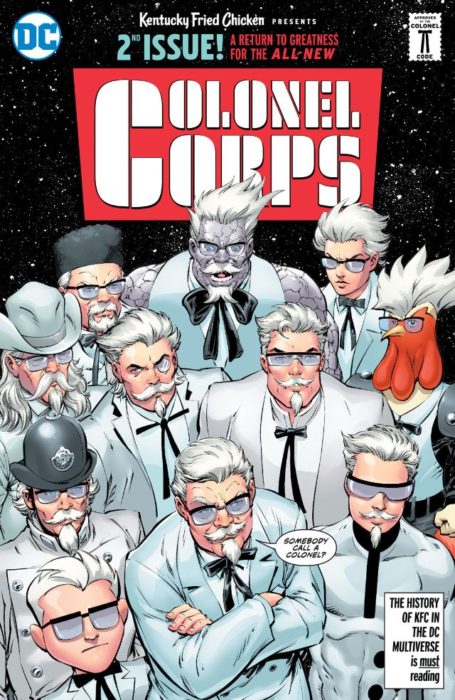
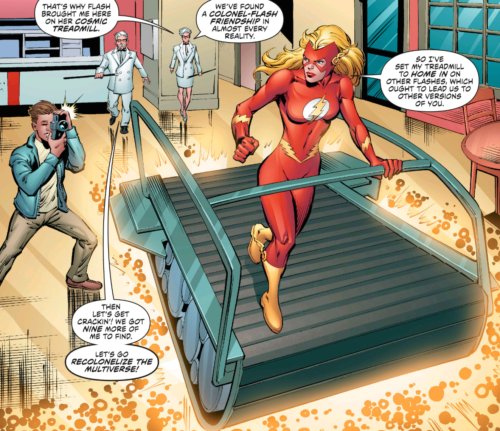

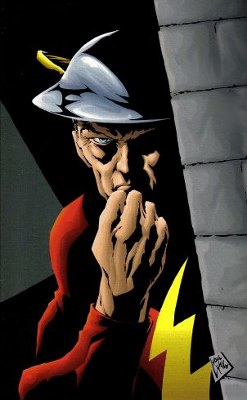
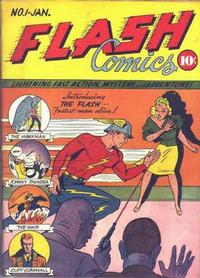 So let’s take a moment and just go over the finer points of my argument. When the Flash began way back in the 40s, he was a character that was given his own book nearly as soon as he was established. In January 1940, Flash Comics began as a variety comic that would feature new characters and give them a chance to flourish. Some of the most famous of these characters would be Johnny Thunder, Hawkman, Hawkgirl and Black Canary. This began an eerie precedence of the Flash establishing ideas and characters that would last and break out of his book time and time again. The book ran nearly the entire span of the Golden age, ending just a few months shy of the “official” end date.
So let’s take a moment and just go over the finer points of my argument. When the Flash began way back in the 40s, he was a character that was given his own book nearly as soon as he was established. In January 1940, Flash Comics began as a variety comic that would feature new characters and give them a chance to flourish. Some of the most famous of these characters would be Johnny Thunder, Hawkman, Hawkgirl and Black Canary. This began an eerie precedence of the Flash establishing ideas and characters that would last and break out of his book time and time again. The book ran nearly the entire span of the Golden age, ending just a few months shy of the “official” end date. 